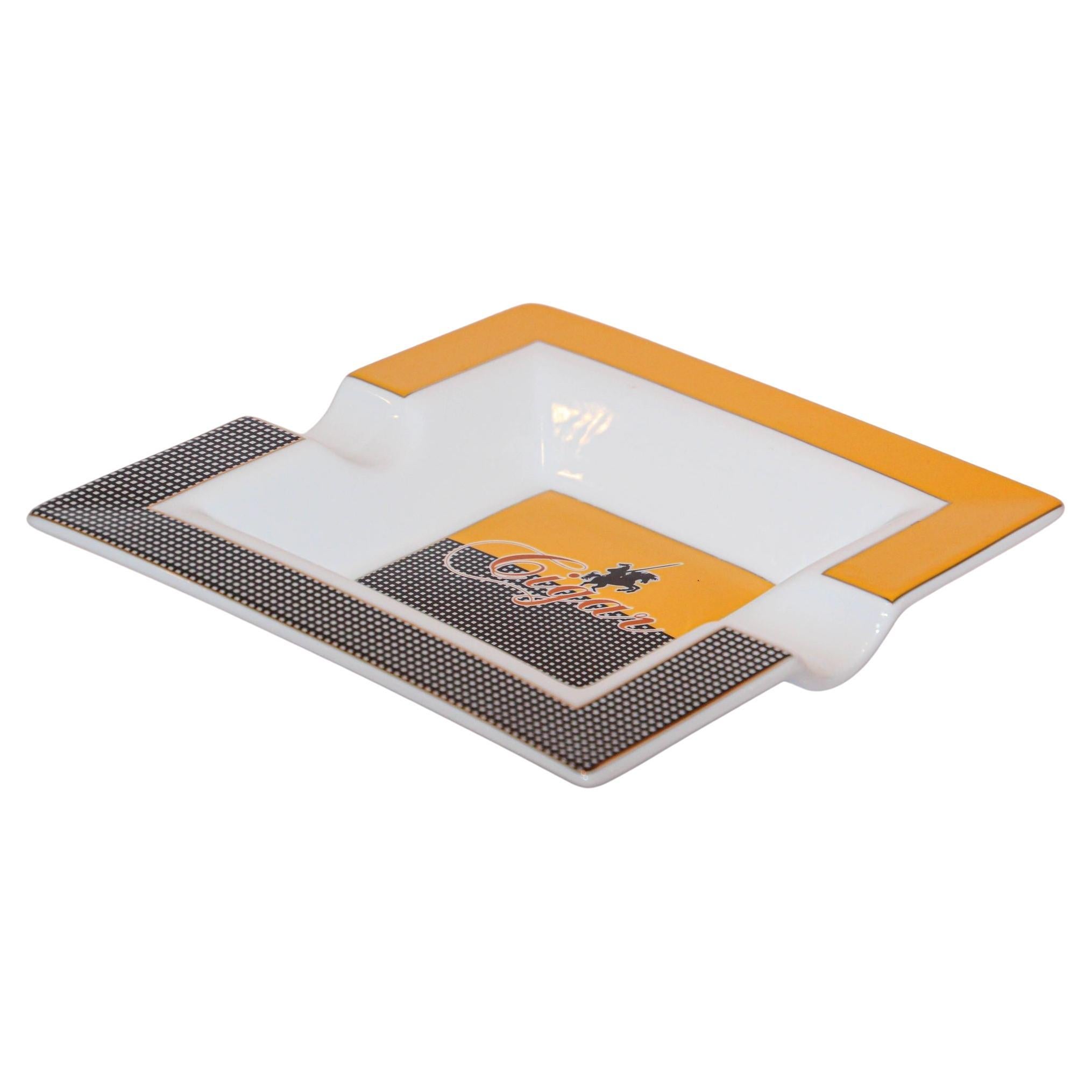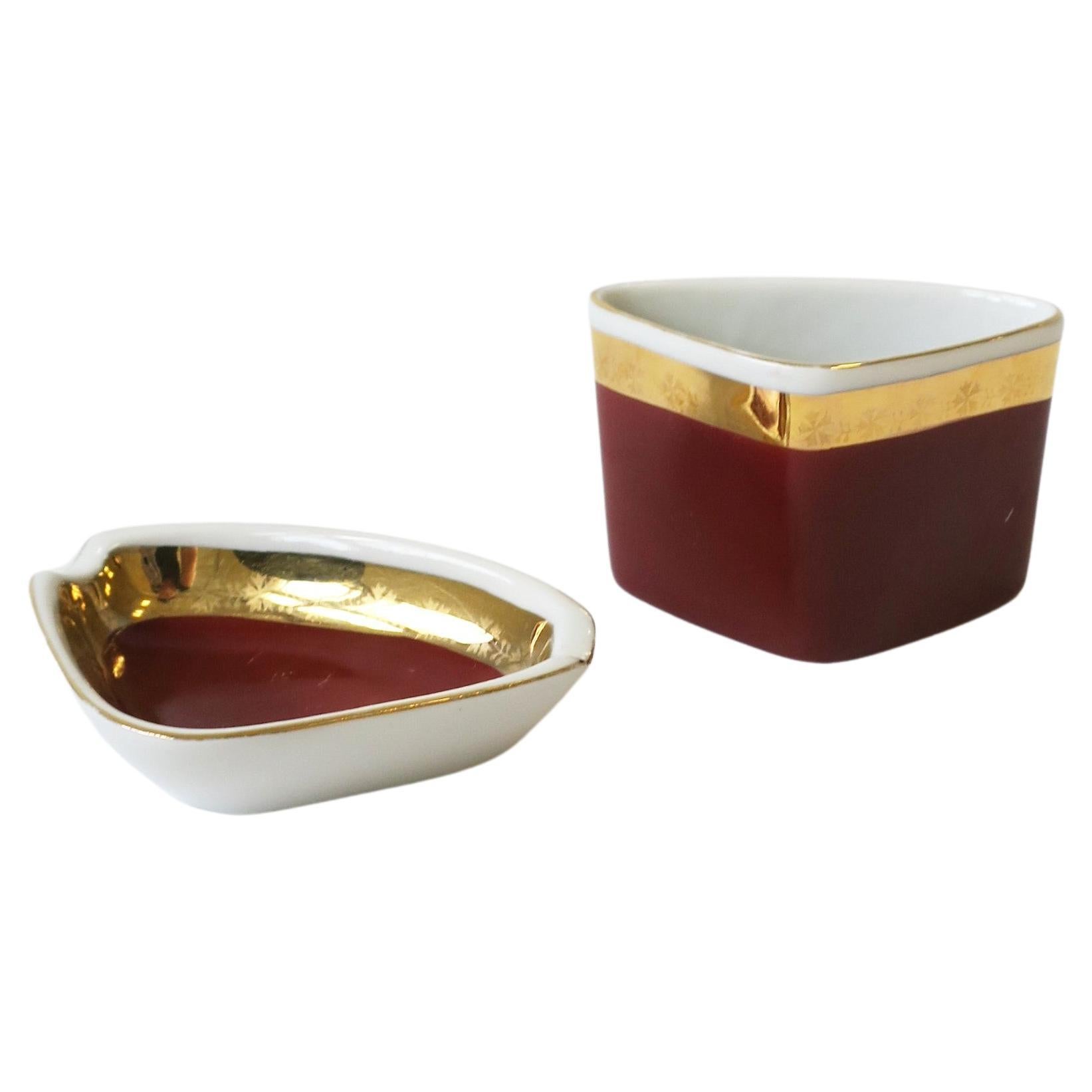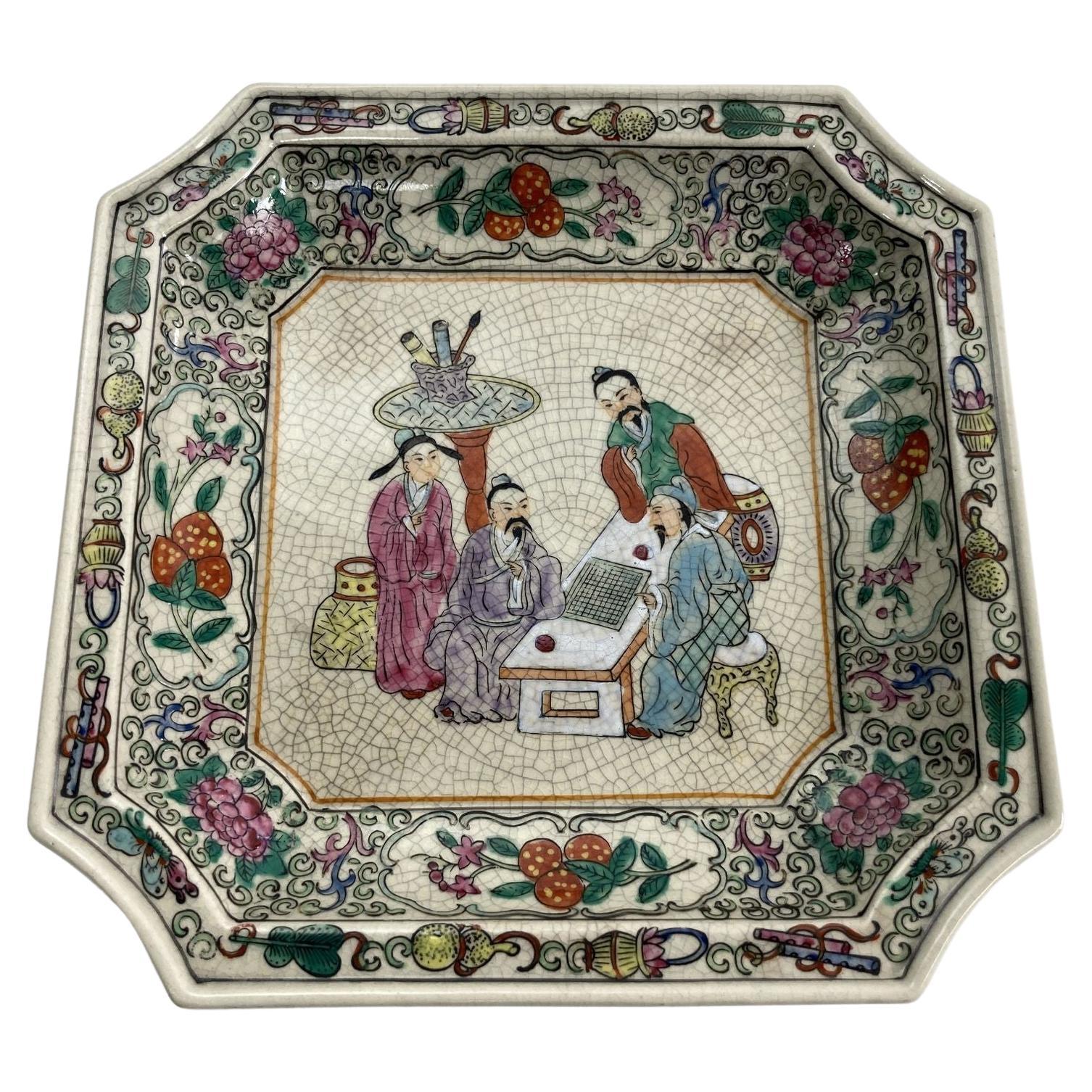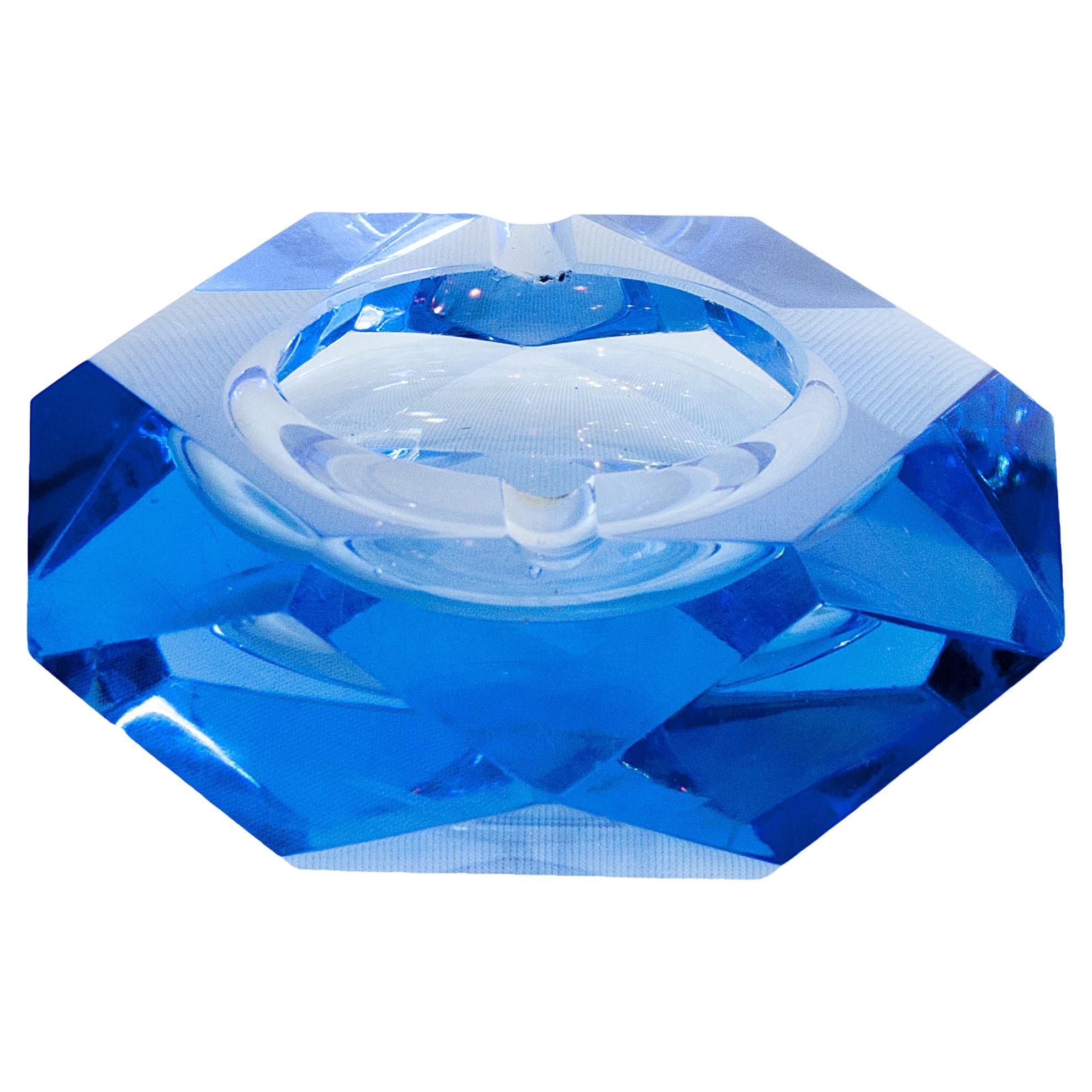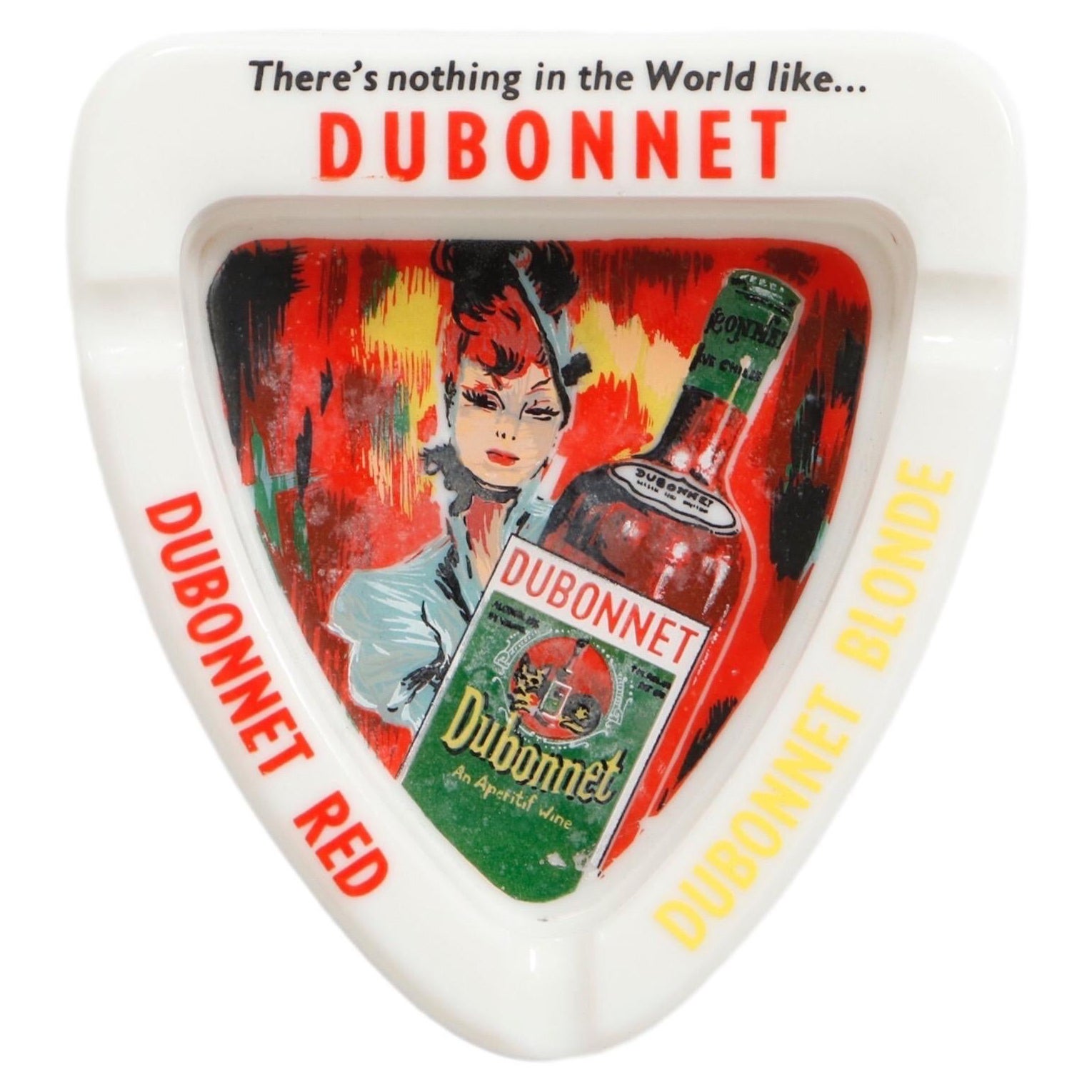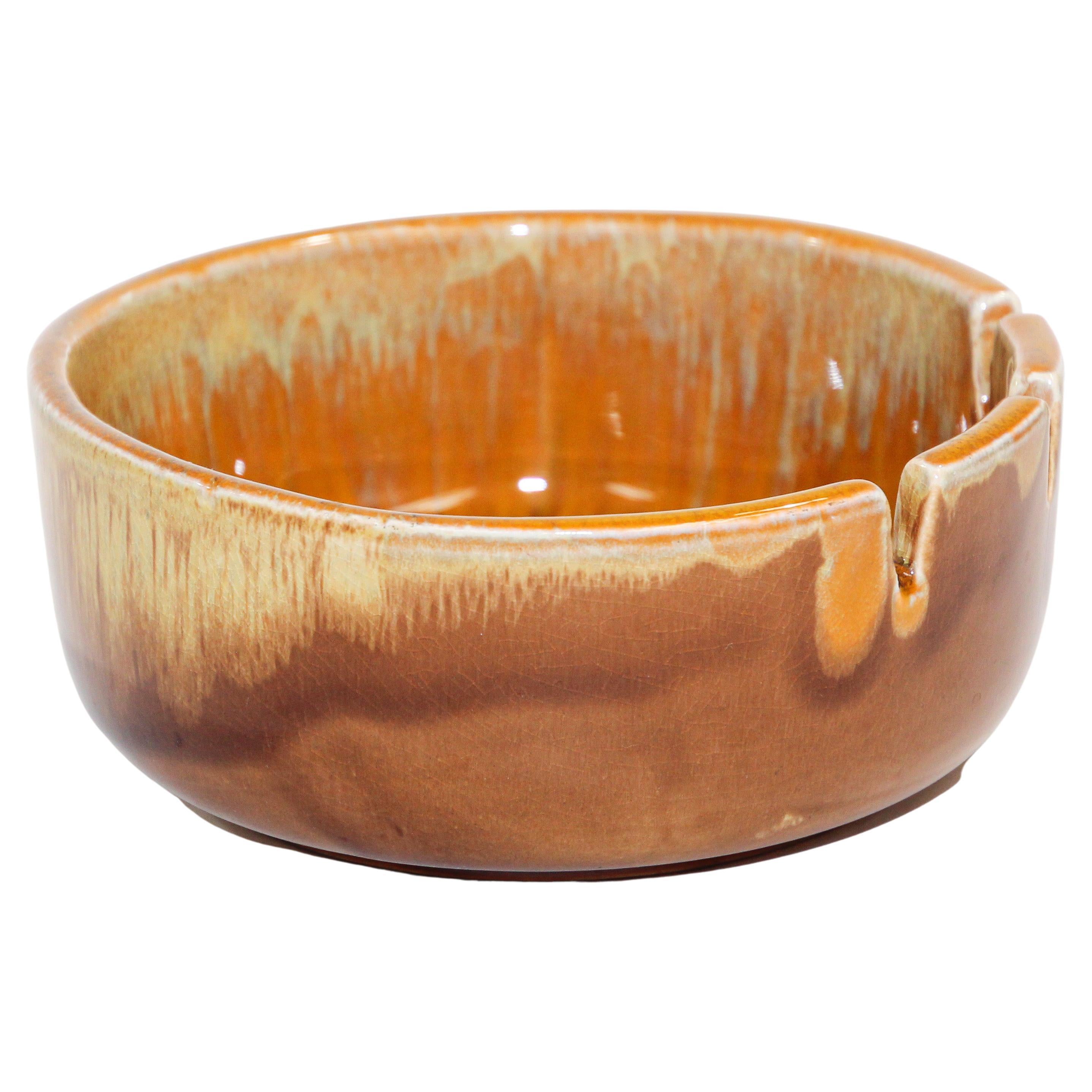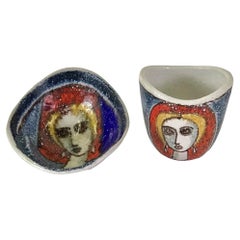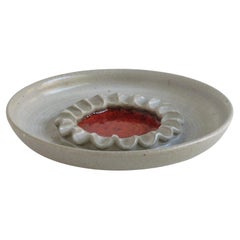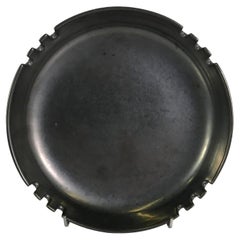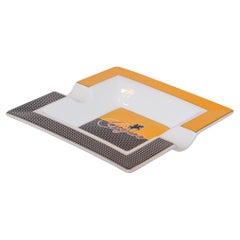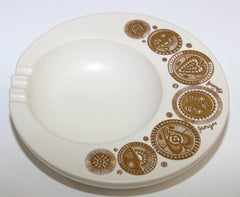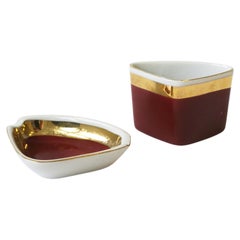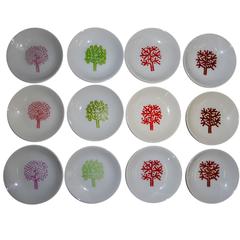
14 Four Seasons Restaurant Porcelain Dish Ashtrays
View Similar Items
Want more images or videos?
Request additional images or videos from the seller
1 of 11
14 Four Seasons Restaurant Porcelain Dish Ashtrays
About the Item
- Creator:Emil Antonucci (Artist)
- Dimensions:Height: 0.5 in (1.27 cm)Diameter: 4 in (10.16 cm)
- Sold As:Set of 14
- Style:Mid-Century Modern (Of the Period)
- Materials and Techniques:
- Place of Origin:
- Period:
- Date of Manufacture:1960s
- Condition:Wear consistent with age and use. Small edge chip to one and one with two small glaze skips (see picture).
- Seller Location:Miami, FL
- Reference Number:1stDibs: LU83015202623
About the Seller
4.9
Vetted Seller
These experienced sellers undergo a comprehensive evaluation by our team of in-house experts.
Established in 2003
1stDibs seller since 2007
453 sales on 1stDibs
Typical response time: 3 hours
Associations
20th Century Specialists
More From This SellerView All
- 60s Italian Modern Aldo Londi Ashtray & Cigarette Holder by Bitossi RaymorBy Aldo Londi, Bitossi, RaymorLocated in Miami, FLWonderful combo of Ashtray and Cigarette Holder designed by Aldo Londi and produced by Bitossi for the retailer/importer Raymor. The hand painted and decorated portion of the pieces...Category
Vintage 1960s Italian Mid-Century Modern Ashtrays
MaterialsCeramic, Pottery
$304 Sale Price / set20% Off - Classic Victoria Littlejohn Hand Thrown Mid Century Pottery Vessel Dish AshtrayBy Victoria LittlejohnLocated in Miami, FLAn enticing pottery design by Victoria Littlejohn, hand thrown Dish with a wonderful neutral oatmeal color glaze with a central red orange crystalline thick glaze surrounded by a cri...Category
Vintage 1970s American Mid-Century Modern Tobacco Accessories
MaterialsClay, Earthenware, Pottery
$200 Sale Price20% Off - Lee Rosen for Design Technics Modern Gun-Metal Black Ceramic Ashtray 1960sBy Design Technics, Lee RosenLocated in Miami, FLLee Rosen for Design Technics Modern large Gun-Metal Black ceramic ashtray from the 1960s. Logo from Design Technics embossed on bottom hard to see due to glazing. Clean and elegant...Category
Vintage 1960s American Mid-Century Modern Ashtrays
MaterialsCeramic, Pottery
- Attrib. Per Lutken Holmegaard Denmark Heavy Space Age Modern Glass Ashtray BowlBy Per Lutken for HolmegaardLocated in Miami, FLSpace age glass vessel attributed to Per Lutken for Holmegaard, Denmark 1970s. Probably meant to be an tri-deposit ashtray, it has been made in very heavy clear glass with 3 clam sh...Category
Vintage 1960s Danish Mid-Century Modern Ashtrays
MaterialsArt Glass
- Danish Modern Teardrop Dark Green & Clear Glass Vessel Per Luken Holmegaard 1959By Per Lütken, Per Lutken for HolmegaardLocated in Miami, FLElegant shaped Danish Modern vessel from 1959 designed by Per Lutken for the Holmegaard glass factory in Denmark. This asymmetrical handmade drop shaped form was part of the Flamingo Series created in the 1950s. It seems that this series was produced in limited colors, aqua blue, a clambroth color (very rare), and in a dark green and clear combination. Engraved in the bottom -Holmegaard 1959...Category
Vintage 1950s Danish Mid-Century Modern Decorative Bowls
MaterialsBlown Glass
$308 Sale Price20% Off - Asian Modern Designed Cast Iron Incense Burner / Ashtray Japan 1960sLocated in Miami, FLWonderful large cast iron Japanese vessel to be used as an incense burner or a heavy ashtray, perfect for outside. The vessel's design consists of a ...Category
Vintage 1960s Japanese Chinoiserie Tobacco Accessories
MaterialsIron
You May Also LikeView All
- Large Vintage Porcelain Cigar Ashtray 1980'sLocated in North Hollywood, CALarge vintage square ceramic porcelain cigar ashtray. Large collectible cigar ashtray in yellow and black and white check with gilt borders that break at cigar rests at either side. Gold lettering in the center reads “Cigar”. and there is a knight on horse...Category
Late 20th Century Post-Modern Ashtrays
MaterialsPorcelain
- Georges Briard Midas Hyalyn Porcelain Ashtray with Gold DesignBy Georges BriardLocated in North Hollywood, CAGeorges Briard Midas Hyalyn porcelain ashtray trinket dish home bar decor. Vintage Georges Briard ceramic ashtray Mid Century Retro gold medallion graph...Category
Mid-20th Century American Mid-Century Modern Tobacco Accessories
MaterialsPorcelain
- Midcentury Modern Porcelain Ashtray and Cigarette Holder Set from HungaryLocated in New York, NYA Hungarian porcelain ashtray and loose cigarette vessel holder set, Mid-Century Modern, circa early to mid-20th century, Hungary by Hollohaza. Set has a triangular shape with gold a...Category
Mid-20th Century Hungarian Mid-Century Modern Ashtrays
MaterialsPorcelain
$370 Sale Price / set40% Off - 1950s Toots Shor Restaurant AshtrayBy Hall ChinaLocated in Ferndale, MIA triangular shaped maroon or burgundy and gold TOOTS SHOR ashtray from the legendary Toots Shor restaurant and lounge in NYC. c.1950 Hallmark on underside....Category
Mid-20th Century American Mid-Century Modern Ashtrays
MaterialsGold Leaf
- Vintage Asian Style Porcelain Octagonal Ashtray Dish CatchallLocated in North Hollywood, CAVintage 1950s Asian style dish, ashtray, catchall. Large vintage ornamental hand painted Chinoiserie porcelain tray/catchall with clipped edges. Hand pa...Category
Mid-20th Century Hong Kong Chinoiserie Ashtrays
MaterialsPorcelain
- Ashtray Crystal, 1950Located in Ciudad Autónoma Buenos Aires, CCrystal We have specialized in the sale of Art Deco and Art Nouveau and Vintage styles since 1982. Why are there so many antiques in Argentina? In the 1880 – 1940 there was a grate wave of immigration encouraged by the periods of war that were taking place. 1st World War took place between 1914 and 1918 2nd World War took place between 1939 and 1945 The immigrants options were New York or Buenos Aires. Tickets were cheap and in Buenos Aires they were welcomed with open arms, as it was a country where everything was still to be done. Argentina was the country of new opportunities, labour was needed and religious freedom was assured, in many cases the of the family travel first until they were settled and then the rest of the family members join them. In the immigrant museum “Ellis Island Immigrant Building” in New York you can se the promotional posters of the boats that would take them to a new life. Between the years 1895 and 1896, Argentina had the highest DGP (gross domestic product) per capita in the world according to the Maddison Historical Statistics index, this situation arose due to the large amount of food being exported to European countries, which were at war. The Argentinean ships left the port of Buenos Aires with food, but they returned with furniture, clothes and construction elements, (it´s common to see this the old buildings of the historic neighbourhood of San Telmo, the beams with the inscription “Made in England)”, as well as many markets that were built in Buenos Aires, such us the San Telmo Market, whose structure was brought by ship and afterwards assembled in 900 Defensa Street. With the great influence of European immigrants living in the country, the children of the upper classes travelled to study in France, resulting in the inauguration of “La Maison Argentinienne”, on 27th of June 1928, in the international city of Paris, which hosted many Argentinians that were studying in Frace. It´s the fourth house to be built after France, Canada and Belgium, being the first Spanish-speaking one. Still in place today (17 Bd Jourdan, 75014, Paris, France). Many of the children of these wealthy families who attended international art exhibitions, museums and art courses abroad, took a keen interest in the European style. This is why Buenos Aires was at the time referred as “The Paris of South America”. Between the years 1890 and 1920 more than a hundred Palaces were built on Alvear Avenue the most exclusive avenue in Buenos Aires. Today some of these palaces have been transformed into museums, hotels and embassies. In the year 1936, the Kavanagh building was inaugurated, it was the tallest reinforced concrete building in South America. During 1994 the American Society of Civil Engineers distinguished it as an “international engineering milestone”, and it´s now considered a World Heritage of Modern Architecture. At the time was common to hire foreign architects such as Le Corbusier, who visited Buenos Aires/Argentina in 1929 and in 1948 he drew up the blueprints for a house built in La Plata City (which was declared a World Heritage Site). In 1947, the Hungarian architect Marcelo Breuer designed “Parador Ariston” in the seaside city of Mar del Plata. After an Argentinean student at Harvard University convinced him to come to Argentina. He worked on an urban development project in the Casa Amarilla, area of La Boca. The Ukrainian architect, Vladimiro Acosta, arrives in Argentina in 1928 and worked as an architect until que moved to Brazil. Antonio Bonet, a Spanish architect who worked with Le Corbusier in Paris, arrives in Argentina in 1937, where he carried out several architectural works and in 1938 designs the well-known BFK chair. Andres Kálnay, of Hungarian origin, made around 120 architectural masterpieces, among which the former Munich brewery stands out, he even made the furniture’s design. The German architect, Walter Gropius, director of the Bauhaus, lived in Argentina, where he wrote articles for “Sur” magazine and founded in Buenos Aires, an architectural firm with Franz Möller, who was also an architect, where he built two houses. At the same time several famous designers decided to immigrate to Argentina, among them we can find the well-known French designer, Jean-Michel Frank, who arrived in the country in 1940 and also worked for the Rockefeller family. Special pieces were made, which were sold exclusively in the country, such as the well-known German company “WMF”, who sold their products by catalogue, which were chosen by the ladies of high society in the list of wedding gifts, as well as the pieces designed by Christofle. The Swiss sculptor Alberto Giacometti, made special pieces for Argentinean mansions. In 1904 the first Jansen branch outside Paris was established in Buenos Aires, as the Argentinean clientele demanded a large amount of furniture, from the end of the 19th century to the mid-20th century. In 1970, the brand Rigolleau Argentina made pieces authorised by Lalique. The brands Maple and Thompson also set up shop in the country. The French plastic artist, Marcel Duchamp moved to Argentina in 1918-1919. Glass signed Gallé, Charder, Leverre, Schneider, Muller and other French firms. They were bought in flower shops and were given to ladies with beautiful floral arrangements. Some furniture manufacturers travelled to international fairs and bough the patterns to produce the furniture in Argentina, such as the furniture firm Englander and Bonta, who bought the patterns ins Italy. It is worth mentioning that in Argentina we have the largest community of Italians outside...Category
Vintage 1950s Italian Space Age Ashtrays
MaterialsCrystal
$1,500
Recently Viewed
View AllMore Ways To Browse
Tobacco China
Four Seasons Porcelain
Eero Saarinen Set Of 4
China Dishes Vintage
Vintage China Dishes
Vintage Chinese Dishes
Mid Century China Dishes
Four Seasons Restaurant
The Four Seasons Restaurant
Vintage Chinese Restaurant
Vintage China Sets Dishes
Vintage China Dishes Set
China Ashtray
Restaurant Ashtrays
Porcelain Chinese Ashtrays
Mies Van Der Rohe Four Seasons
Johnson Dishes
Giant Lighter
